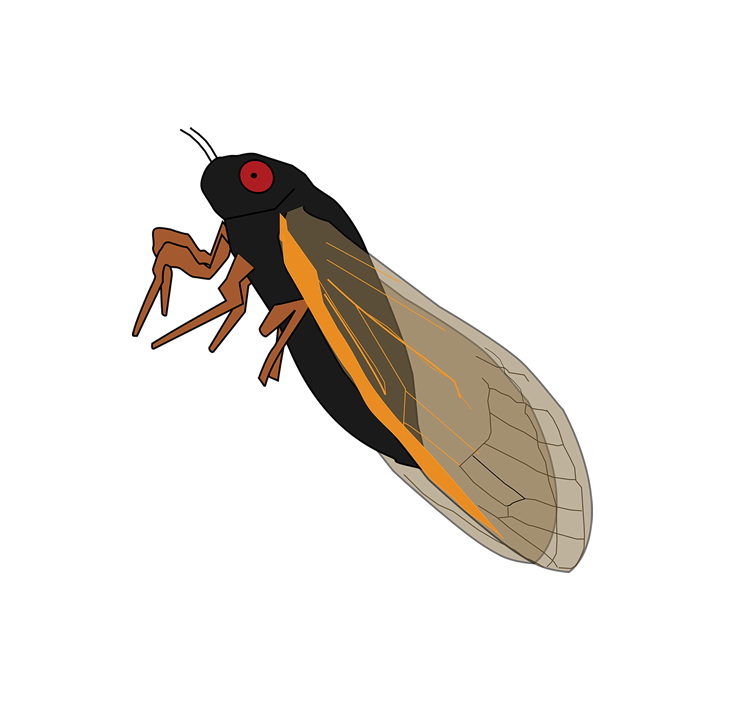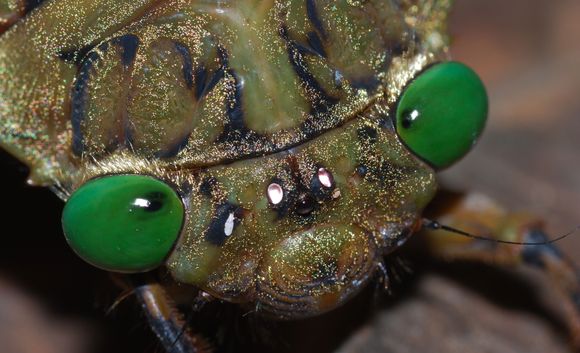Cicadas: Nuisance or Summer Lullaby, They Have a Fascinating Life!
Oh Summer ... Days full of beautiful sunsets, swimming, relaxing, and OH NO! noisy, annoying little cicadas singing all over the place and spoiling all the quietness and fun!
You will either love them or you will hate them. Either ways, there is a lot of things you do not know about them.
I invite you to this once-in-a-lifetime opportunity to learn everything there is to know about Cicadas. I assure you, that by the time you read this article, you will come to respect and admire them and you will also tell the difference between tzitziki and tzatziki!
What are Cicadas?
As per the late author John Berger cicadas are the dead poet's souls who cannot keep quiet because they remember the poems they did not write when they were alive.
“Do you know the legend about cicadas? They say they are the souls of poets who cannot keep quiet because, when they were alive, they never wrote the poems they wanted to.”
According to science though, cicada is an insect with more than 2500 species, divided into two families.1 They reside in tropical climates and can be found almost anywhere in the world (apart from Antartica)
Do all Cicadas look alike?
No. There are many diverse species, different in their appearance but also in their behaviour.
The adult cicadas can be between 2-5 cm (however some Asian species can be as large as 7cm!1>)
The largest species of them all is the Empress Cicada with a body of 7cm and a wingspan that can reach 20cm!
Their eyes are apart from each other and their color can be gray, white, blue, yellow or even multi colored. 3
The cicadas actually have two large eyes and three little eyes in between (called ocelli) probably used to detect light or darkness.
There is a so called 'hairy cicada' (Tettigarctidae) which is almost extinct. These species are not capable of producing sounds like the 'singing cicadas'source
Cicadas Wings
The cicada wings are water repellent or super-hydrophobic
The wings "are covered in rows of waxy cones"2 which help them stay clean and dry in case of rain. This mechanism is very important as it has lead to further research about improved self cleaning materials.
Sometimes malnutrition, inability to molt, infections or predator's attache may cause damages to cicadas wings.3
Cicadas Song
I was under the impression that cicadas sound the same everywhere, but actually their singing is different from place to place.
If you would like to listen to their different song varieties, visit the Wikipedia page and let me know what you think!
The song we hear is coming from male cicadas calling for females. The sounds we are hear are actually mating calls, creating by a tymbal organ. You can read a research regarding the super fast muscles here
What do Cicadas eat?
Cicadas do not eat, but rather 'drink' the tree fluids with their (straw-like) little mouths. This results to .. guess what? cicada pee!
According to CicadaMania4
Yes cicadas pee, so wear a hat when walking under trees if that sort of thing bothers you. Cicadas drink tree fluids, and then expel the excess fluid they do now need. People call it “honey dew” or “cicada rain”.
Cicadas' life span
The greatest part of cicadas' life is spent underground, while they live as nymphs (larvae). During that time (which varies from 1 to 17 years, depending on the species), the little nymphs use their elongated tubular mouth part (known as proboscis) to feed on plant sap1
After they reach the final development stage, the little pro-cicadas crawl up to the ground and the molting process begins. They become adults with a shell that is hardened in a few hours.
They are mating during most of their life on the surface and the females cut little holes in the tree barks, where they lay hundred of eggs. After that, the cicadas die.
When the eggs hatch, they instinctively drop to the ground and remain hidden until they grow up .. and so the story goes!
Annual or Periodic species
There are periodic cicadas who spend 13 to 17 years underground, prior to come to the surface and there are annual cicadas who emerge on a yearly basis.
Greek Cicadas?
I know some may ask so, the cicada residing in Greece is the Tibican Plebejus5 which is called in Greek 'tzitzikas' or 'tzitziki' and has nothing to do with 'tzatziki'
Who would have thought that Cicadas can be so fascinating animals?
They can be annoying, for some they are a 'summer lullaby' but for all of us they mean that the happy Summer Time is finally here!
Cicadas have been existing since the Upper Permian geologic period, millions of years ago 6 and they have inspired poets and artists ever since Homer's Iliad and the Chinese Dynasty.
In China, cicada is a symbol of both immortality & rebirth and I can assure you that after this article I will never look at them with the same eyes and thoughts again.
Thank you very much for visiting and reading! I would love to hear your comments, if you have them in your country and anything (a funny story or your thoughts) you would like to share : )

References - Retrieved 26-28 April 2018
Inside Science https://www.insidescience.org/news/cicada-wings-are-self-cleaning
CicadaMania.Com - Wings http://www.cicadamania.com/cicadas/why-do-some-cicadas-have-shriveled-up-or-damaged-wings/
CicadaMania http://www.cicadamania.com
Catalogue of Life Tibicen Plebejus https://www.gbif.org/species/7541485
Wikipedia - Cicadas https://en.wikipedia.org/wiki/Cicada
Further Reading
- Prof. Chris Simmons & Colleagues - Magicicada.org http://magicicada.org/magicicada/
- Mythology and Cicadas - https://en.wikipedia.org/wiki/Cicada_(mythology)

SteemSTEM is a community project with the goal to promote and support Science, Technology, Engineering and Mathematics on the Steem blockchain. If you wish to support the steemSTEM project you can:
Contribute STEM content using the #steemstem tag | Support steemstem authors | Join our curation trail | Visit our Discord community | Delegate SP to steemstem











Comments